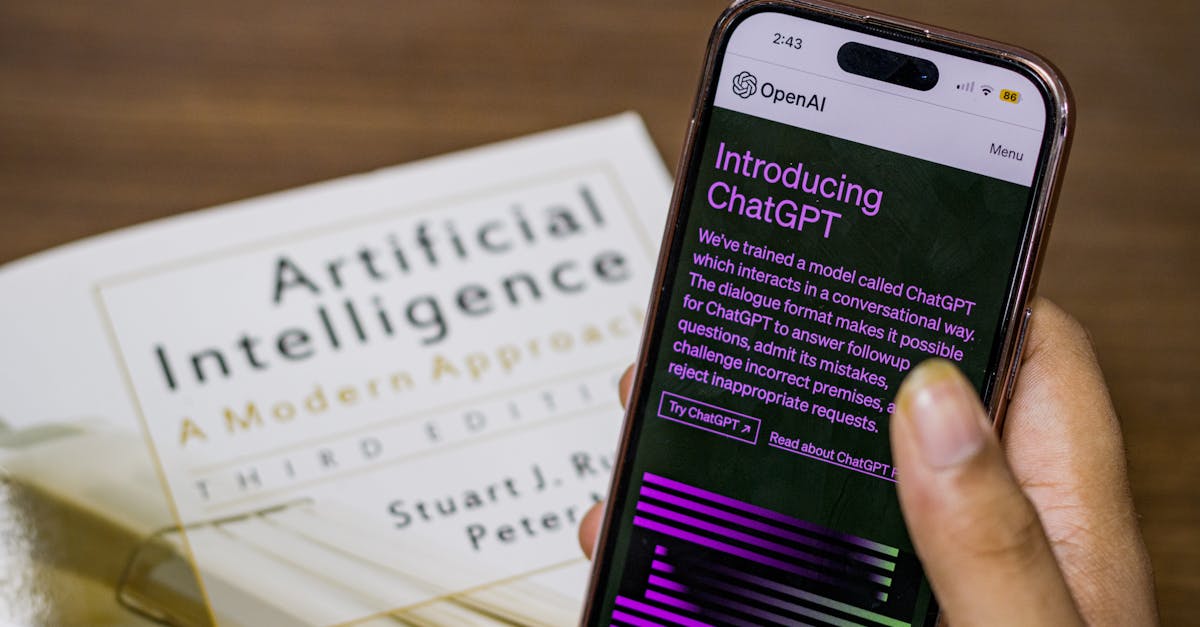AI Predictions: How To Use Them to Your Advantage

Every day, we generate massive amounts of data that contain valuable insights into our behaviors and interactions. AI predictions are the key to unlocking these insights and making informed decisions. But with so much data available, it can be a challenge to know where to start.
In this article, we'll explore how you can harness the power of AI predictions for your advantage. From understanding the basics of machine learning algorithms to embracing computational thinking, we'll guide you through the essential concepts that will help you unlock the potential of AI predictions. Whether you're a business owner looking to disrupt your industry or an individual seeking better-informed decisions, this article promises to equip you with the necessary skills and knowledge.
Understanding the Power of AI Predictions
AI predictions have transformed the way we see, interpret, and understand data. They are algorithms that use machine learning techniques to analyze data, identify patterns, and make accurate predictions. With the ability to process vast amounts of structured and unstructured data in real-time, AI predictions have become a powerful tool for individuals and businesses alike.
The power of AI predictions lies in their ability to provide insights into what could happen in the future based on historical data. This information can be used to make better decisions that can help individuals and businesses stay ahead of their competition. With AI predictions, businesses can predict customer behavior, market trends, supply chain disruptions and much more. By leveraging accurate forecasts generated by these algorithms, businesses can optimize their strategies for success.
Utilizing Algorithms for Accurate Predictions

Algorithms have been a game changer in the world of AI predictions. They are responsible for processing vast amounts of data, identifying patterns and insights and providing accurate predictions that can be utilized in various fields. Utilizing algorithms has become an essential part of any predictive modelling, as it provides the necessary tools to analyze large amounts of data, detect patterns and make sound decisions.
A key advantage of utilizing algorithms is their ability to learn from data sets and provide increasingly accurate predictions over time. This is achieved through a process known as machine learning, which allows algorithms to improve their performance based on past experience. By leveraging this technology, businesses can reduce errors and improve their decision-making processes while keeping up with market trends.
Deep Learning: The Future of AI Predictions
When it comes to AI predictions, deep learning is undoubtedly the future. Deep learning algorithms are designed to mimic the neural networks of the human brain, allowing them to learn and improve with experience. With this technology, AI systems can accurately predict outcomes in complex scenarios with high levels of accuracy.
This technology has already made significant strides in industries such as healthcare and finance, where it has been used to detect diseases and make more informed investment decisions. As deep learning algorithms continue to advance, we can expect even greater accuracy and efficiency in a wider range of applications.
Computational Thinking: A Must-Have Skill for AI Prediction
In the world of AI predictions, computational thinking is a fundamental skill that you must-have. Computational thinking refers to the ability to formulate a problem in a way that a computer can solve it. It involves breaking down complex problems into simple, more manageable parts, analyzing data, and developing an algorithmic approach to solve them.
By developing computational thinking skills, you can improve your ability to understand and apply AI prediction models effectively. The process allows you to identify patterns and trends in large datasets and develop algorithms that help predict outcomes with greater accuracy.
To master computational thinking for AI prediction, start by learning how to recognize patterns in data. This involves analyzing large datasets using tools such as spreadsheets or visualizing software. Once you have identified patterns and trends in the data, develop an algorithmic approach that solves the problem efficiently while minimizing errors.
Finally, keep practicing this skill by incorporating it into your daily life. Finding new ways to apply computational thinking will not only enhance your ability to predict events accurately but will also give you an edge over others who lack this crucial skill.
Embracing AI Predictions for Better Data-Driven Decisions

As the amount and complexity of data grow exponentially, making sense of it all has become a daunting challenge for businesses of all sizes. With AI predictions, however, companies can leverage the power of machine learning to extract insights and patterns from large datasets that would have been impossible to detect otherwise.
The key to embracing AI predictions is to understand that they are not a magic bullet but rather a tool that enhances human decision-making. By combining the intuitive abilities of humans with the analytical capabilities of machines, businesses can make more informed decisions based on facts and evidence rather than guesswork or gut instinct.
Unleashing the Potential of AI Predictions in Business
As businesses continue to collect massive amounts of data, they are turning to AI predictions to gain valuable insights and make data-driven decisions. By leveraging AI algorithms, businesses can unlock the potential of their data and gain a competitive edge.
AI predictions have wide-ranging applications in business, from predicting customer behavior and demand for products to optimizing supply chain management. For example, retailers can use AI predictions to determine which products are likely to sell during specific times of the year or which customers are most likely to churn. This information can be used to adjust marketing campaigns or personalize offers for individual customers.
Furthermore, predictive maintenance is another application where AI predictions have shown significant potential in business. By analyzing sensor data from machines and equipment, businesses can proactively identify potential failures before they occur, preventing costly downtime and repairs.
In conclusion, businesses that embrace AI predictions stand to gain a competitive advantage by unlocking the full potential of their data. Whether it's predicting customer behavior or optimizing supply chain management, AI predictions have the power to revolutionize how businesses operate and make decisions.
Disrupting Industries with AI Predictions

AI predictions have the power to transform industries by providing insights and uncovering patterns that would be difficult or impossible for humans to discover on their own. The healthcare industry, for example, can benefit from AI prediction models that can analyze large amounts of data to identify disease patterns and recommend personalized treatments. This could lead to more effective treatments, lower healthcare costs, and better patient outcomes.
The financial sector is another industry that is ripe for disruption through AI predictions. Financial institutions can use predictive analytics to identify patterns in customer behavior, detect fraud and prevent losses. Furthermore, they can use machine learning algorithms to optimize investment portfolios or make trading decisions based on market trends and historical data.
Overcoming AI Prediction Obstacles

While AI predictions can be highly accurate, they are not without obstacles. One major challenge is the lack of interpretability in some algorithms. This means that it can be difficult to understand why the algorithm arrived at a particular prediction. This can be a significant obstacle when trying to explain the reasoning behind a decision to stakeholders or customers.
Another obstacle with AI predictions is the risk of bias in data sets. If there are inherent biases in the data being used to train an algorithm, those biases can be amplified and reinforced by the predictions made by that algorithm. This can lead to decisions being made based on unfair or inaccurate data, which could have serious consequences for individuals or groups affected by those decisions.
To overcome these obstacles, it's essential to choose algorithms that prioritize interpretability and transparency. Additionally, careful attention must be paid to data sets used for training algorithms, ensuring that they're representative and unbiased as possible.
The solution lies in bringing together domain experts, data scientists and other specialists who work together from start to end while deploying machine learning models into production. The collaborative design builds more accurate models while keeping transparency levels high which allows decision-makers to have complete visibility into how their models make decisions leading to better business outcomes.
The Ethics of AI Predictions: A Matter of Responsibility
As we increasingly rely on AI predictions to make decisions, it's important to consider the ethical implications. While machines can provide accurate and efficient predictions, they lack the ability to put those predictions into context or consider the wider consequences. This puts the responsibility on humans to ensure that AI predictions are used ethically and responsibly.
One concern is that AI predictions could perpetuate existing biases or discrimination. For example, if an algorithm is trained on historical data that reflects unequal treatment based on race or gender, it may produce biased predictions that further entrench these inequalities. To address this, it's important to ensure that training data sets are diverse and representative of all groups.
In addition, it's crucial to be transparent about how AI predictions are being made and what data is being used. This not only helps build trust with users but also allows for scrutiny and oversight. As we continue to integrate AI into our decision-making processes, we must prioritize accountability and responsible use.
AI Predictions: A Journey of Continuous Learning
Artificial intelligence is constantly evolving, and so are the predictions it generates. The journey of AI predictions is a continuous learning process that requires constant adaptation and improvement. As more data becomes available to train machine learning algorithms, AI predictions become more accurate and reliable.
One of the most exciting aspects of the journey of AI predictions is the potential for new discoveries. As machines process vast amounts of data, they can identify patterns that humans might never have noticed. These patterns can lead to breakthroughs in science, medicine, and technology that could revolutionize entire industries.
Conclusion
In conclusion, AI predictions have become an essential tool in decision-making processes. The power of algorithms to provide accurate predictions and insights is changing the way businesses operate. With the continuous advancements in deep learning and computational thinking, we can expect even more innovative applications of AI predictions in the future. However, it's important to remember that with such power comes great responsibility. As we continue to embrace AI predictions, we must also prioritize ethical considerations and ensure that they are utilized for the greater good. Ultimately, AI predictions offer a journey of continuous learning and growth as we unlock their full potential in various industries and fields.
Comments
Post a Comment